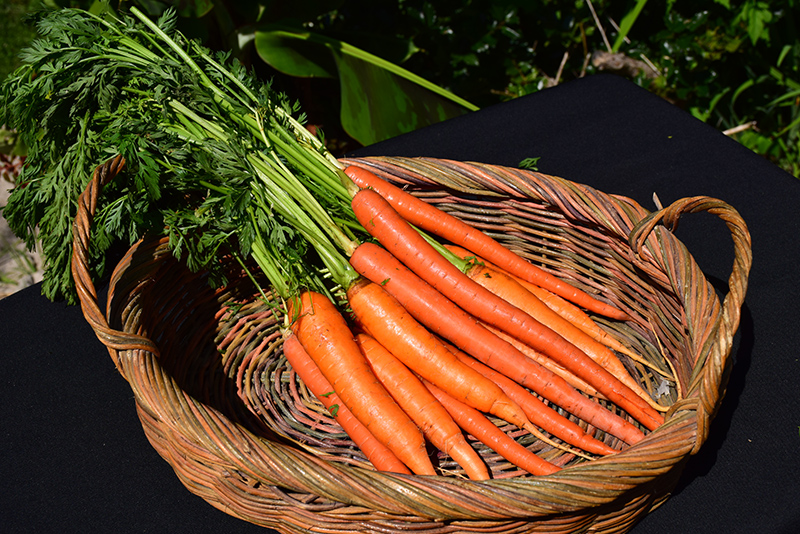Carrot
Daucus carota var. sativus
Add To My Wish List
Height: 3 feet
Spacing: 3 inches
Sunlight:
![]()
Hardiness Zone: (annual)
Description:
From orange and red to purple and white, carrots are a marvelous selection for any sunny garden or large container; short or long, they have a lovely sweet and crunchy texture, making them ideal for roasting, soups, stews, salads and so much more.
Edible Qualities
Carrot is an annual vegetable plant that is commonly grown for its edible qualities. It produces orange long roots with red overtones and orange flesh which are harvested from mid summer to mid fall. The roots will often fade to deep purple over time. The roots have a sweet taste and a crunchy texture.
The roots are most often used in the following ways:
- Fresh Eating
- Cooking
- Baking
- Pickling
- Freezing
Planting & Growing
Carrot will grow to be about 3 feet tall at maturity, with a spread of 24 inches. When planted in rows, individual plants should be spaced approximately 3 inches apart. This vegetable plant is an annual, which means that it will grow for one season in your garden and then die after producing a crop. Because of its relatively short time to maturity, it lends itself to a series of successive plantings each staggered by a week or two; this will prolong the effective harvest period.
This plant is typically grown in a designated vegetable garden. It should only be grown in full sunlight. It does best in average to evenly moist conditions, but will not tolerate standing water. It is not particular as to soil type or pH. It is somewhat tolerant of urban pollution. This species is not originally from North America..
Carrot is a good choice for the vegetable garden, but it is also well-suited for use in outdoor pots and containers. With its upright habit of growth, it is best suited for use as a 'thriller' in the 'spiller-thriller-filler' container combination; plant it near the center of the pot, surrounded by smaller plants and those that spill over the edges. It is even sizeable enough that it can be grown alone in a suitable container. Note that when growing plants in outdoor containers and baskets, they may require more frequent waterings than they would in the yard or garden.
